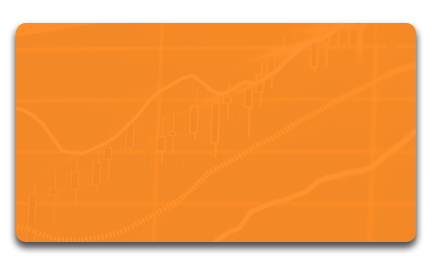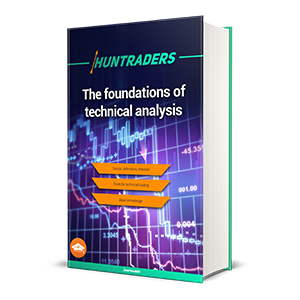Trading with options is risky. But what are the risks associated with option trading? Which option strategies are risky and which aren’t? Is it possible to lose all the invested capital with option trading? The following lesson is looking for the answer to all these questions.
What are the risks of option trading?
What does risk really mean on the stock market? The risk is the possibility to lose all the invested capital. Simply put, it is the probability to lose money. Trading options is riskier than trading shares, because of its leverage effect. The incorrect execution of option strategies may result significant losses.
The official description of the risk in option trading
The Characteristics and Risk of Standardized Options document, published by the Chicago Board of Exchange (CBOE), is a good start to define options’ risk. Chapter X. is dedicated to this topic. The risks are assessed based on the buyers and the writers of the options and other risk factors are also evaluated. In the following paragraphs, the stock market options are analysed.
Risks of option trading from the buyer’s perspective
1. The money invested in options can be lost quickly, the premium of the bought option may be close to 0. Example: There are three investors: A, B, and C. All of them own $5,000, and hope that the price of XYZ share will rise. The current market price of the share is $50. Investor A invests his $5,000 in 100 pieces of XYZ shares. Investor B invests $500 in Call options with the strike price of $50 (the premium is $5, thus he is entitled to buy 100 shares). He invests the other $4,500 in treasury bonds, which is a relatively risk-free investment. (The expiration of Call option in the example is 6 months. The annual return of the treasury bond is 3.25%, so the return after 6 month is $73.) Investor C invests all his money in Call options (10 contracts with $50 strike price with $5 premium). The following table evaluates the possible gains and losses 6 months later with different market prices.
|
The market price of XYZ share at the option’s expiration |
Investor A |
Investor B |
Investor C |
|||
|
Profit / loss |
Return |
Profit / loss |
Return |
Profit / loss |
Return |
|
|
62 |
+ 1200 |
+ 24% |
+ 773 |
+ 15.7% |
+ 7000 |
+ 140% |
|
58 |
+ 800 |
+ 16% |
+ 373 |
+ 7.5% |
+ 3000 |
+ 60% |
|
54 |
+ 400 |
+ 8% |
- 27 |
+ 0.5% |
- 1000 |
- 20% |
|
50 |
0 |
0 |
- 427 |
- 8.5% |
- 5000 |
- 100% |
|
46 |
- 400 |
- 8% |
- 427 |
- 8.5% |
- 5000 |
- 100% |
|
42 |
- 800 |
- 16% |
- 427 |
- 8.5% |
- 5000 |
- 100% |
|
38 |
- 1200 |
- 24% |
- 427 |
-8.5% |
- 5000 |
- 100% |
The table clearly shows that investing in options can generate both big profits and losses. Investor C - who invested all his money in options - has achieved the largest return when XYZ’s market price was $62. However, his position was already making losses when the market price at expiry was $54 (because the time value of the option run out). If the market price didn’t change at all, the whole investment would have been lost and the option would have lost its value and expired.
2. The higher the OTM level of the option, and the closer the option to expiration, the bigger the probability that the capital will be lost and the level of risk increases. The more OTM an option the less probable it will become ITM. With the approaching expiry date, the number of days to change to ITM decreases and the risks further increase.
3. European options cannot be executed before expiration date. The only way to realise profits before expiry is to sell them.
4. Certain options have risks at execution. For example if the brokerage changes the costs of the execution, or when there aren’t enough funds available on the account for the automatic execution of a Call option. In this case the option will expire worthless and lose its value.
5. Courts or other authorities (e.g. Options Clearing Corporation (OCC)) can introduce enforcement limitations which prevent to realise profits.
Risks of option trading from the seller’s perspective
1. The written options can be executed any time before expiration. Although American options can be executed before expiration, in reality early assignment only happens with ITM options shortly before expiration. When the buyer executes the options, the seller must deliver the underlying security (Call option) or must buy the underlying security (Put option).
2. Covered Call traders give up the right for further profits as soon as the share price rises above the strike price of the option. However, they accept the risk that the underlying’s price may decrease. Example: The market price of XYZ is $50 and the investor writes a Call option with the strike price of $50 and the premium of $4. As the expiration is getting closer, the price of the share increases to $58 and the buyer executes the option. The profit - apart from the dividends - is the premium of the Call option. Without writing the option, the investor could have gained money from the $8 increase in the market price. On the other hand, if the underlying share’s price decreases below the strike price and the option is not executed, and it will result losses.
3. The writers of uncovered Call options (Naked options) agree to face unlimited losses if the underlying’s price increases above the strike price. When the Call option is executed, the writer must sell the shares for the price agreed in the contract. Thus, a sudden price increase can result significant losses for the writer of a Naked Call option.
4. The writers of uncovered Put options agree to face unlimited losses if the underlying’s price decreases below the strike price. When the Put option is executed, the writer must purchase the shares for the price agreed in the contract. Thus, a sudden price decrease can result significant losses for the writer of a Naked Put option.
5. The writer of a naked option undertakes the coverage risk if his position generates losses. Brokers grant liquidity to hedge such risks.
6. Writers of Call options can lose more money on the same price increase than on a short position of the share. If the investor sells 100 XYZ shares for $5,000, then with a $12 price increase (from $50 to $62), the loss will be $1,200. Whereas, when writing 10 Naked Call options with the strike price of $50, the same price increase would result a loss of $7,000.
7. The writer of the Naked Call must deliver the shares for the strike price when the option is executed.
8. Options can be executed after the market closes
9. Writers of options have the obligation even when the market is unavailable, thus they may not be able to close their positions.
10. The price of the underlying can increase/decrease so quickly that the options get automatically executed.
Other risk factors
1. The complexity of some option strategies are a significant risk in itself. This is especially true for complex portfolios based on selling and buying options. Writers of Straddle options must face unlimited risk.
2. The option markets and the option contracts are continuously changing. The conditions and validities are not constant.
3. The option market has the right to suspend the trading of any options, preventing to realise profits.
4. Incorrect execution of options may occur.
5. When an option brokerage goes out of business, the investors can be harmed.
6. International options bring special risks because of the difference in the time zones.
7. A change in the options’ implied volatility can result losses even when the share prices move in the expected direction.
The factors of the options’micro risks
In The Characteristics and Risk of Standardized Options the risk exposure of option buyers and sellers have been summarised comprehensively. Now the risks are going to be examined on the micro level.
1. Uncovered option positions come with unlimited risk.
2. Options can expire worthless. When this happens, the invested money is going to be lost. This is true for 90% of the written options.
3. The leverage effect of options can be useful and dangerous in the same time.
4. Obligation can be highly risky.
5. Conditions of specific option contracts can be changed anytime by the option market or the option brokerage, within legal limitations.
All the factors above are significant risks on the invested capital, thus it is inevitable to be aware of all of them.
The factors of the options’ macro risks
There are three macro risk factors on the stock market. They are not necessarily true for option trading exclusively. These are the primary risk (market risk), secondary risk (sector risk) and idiosyncratic risk (individual stock risk). Options are derived from other securities, thus their risk depends on the underlying product’s risk. That’s why it is important to be aware of these risks as well.
Primary risk (market risk)
Primary or market risk is when the market moves in the opposite direction than expected. If an investor owns a long Call, then the primary risk is that the market prices fall and the Call option becomes OTM. The more shares are bought (the more diverse the portfolio) the bigger the probability that the portfolio will move together with the market. DOW index is a good example, because it consists of more than 30 shares. When investing in all 30 shares, one gets exactly the movement of the DOW index. This is a significant option risk, because the investor is in an overall long Call position.
Secondary risk (sector risk)
Secondary or sector risk is when the sector moves in the opposite direction than expected. It can happen that the shares of specific sectors do not follow the movement of the market. This may result a sector-wide decrease in the market prices. This risk is relevant to the trader if he used a bullish strategy on shares from the same sector.
Idiosyncratic risk (individual stock risk)
Idiosyncratic or individual stock risk is when one invests all his money in the shares of one firm exclusively. It is because any news related to the company can negatively influence the movement of the share price. When investing in only the shares of XYZ, one faces the overall risk of the firm (also the default risk). Individual stock risk happens in option trading when all capital is invested in options with the same underlying share.
There is no chance to hedge all risks mentioned above. When hedging the primary risk by buying only a few shares, the secondary and the individual stock risks are intensified. When individual stock risk is hedged by buying shares of firms in the same sector, the secondary risk is increased.
Delta risk
Delta risk is the one affecting option trading the most. The option strategy does not count, the underlying must behave according to the chosen option strategy to generate profit. For example, applying a Bull Call Spread strategy on the shares of XYZ requires the share prices to increase. If the forecasts are wrong, the trader will lose money. Delta risk can be hedged by a delta neutral strategy.
Other risks
There are other risks apart from the delta risk. These are the gamma, rho, vega or theta risks. They can be hedged by spread trades.
Main lessons
Option trading is risky and one may lose the whole invested capital. However, the risks can be decreased by recognising and hedging the biggest risk factors. Choose an option strategy which is profitable from more directions and be careful with the leverage nature of options. An option trader must be aware of all risks he is facing. After all, option trading is not necessarily riskier than stock trading.
Stock trading can be riskier than option trading
Option trading is risky, but is safer than stock trading from the following aspects. The term risk indicates the probability of losing the invested capital. Below it is shown which stock trading positions can result higher risks than option trading.
Share and leverage option
Shouldn’t options be riskier than shares because of their leverage nature? Yes, when leverage is handled incorrectly. No, if it is managed correctly. Option contracts enable the trader to invest and profit from market price movements for the fraction of the actual share prices. It means that with option trading a smaller part of the capital is risked with the same underlying; decreasing the overall risk. Such position can be the combination of a long Call and a short Put, which is also called a synthetic stock.
Example:
An Apple share is traded at $43.57 and a Call option with the strike price of $43 and maturity of January has the premium of $1.63. One can buy 100 Apple shares for $4,357 or buy 100 Call options for $163. Then the investor profits from an increase in the share price. The maximum loss in the case of the shares is $4,357, whereas the maximum loss is only $163 for option trading. The biggest mistake is when one buys Call options for $4,357. This is a surprisingly common mistake.
Short selling shares
The only way to profit from a decrease in the share price is to short the position. To short something means to sell without owning the product. When the price of the share increases suddenly, investors may lose all their money and may even have issues with the margins. In case of option trading, buying a Put option will benefit from the same instrument’s price decrease. However, losses are limited by the option premium.
Example:
Apple shares’ price is $43.54. The premium of a Put option is $0.70 (expiration in January, strike price is $43). The stock trader shorts 100 shares and the option trader buys 1 contract for $70. If the price of the Apple share increases to $50, the stock trader will lose $646, whereas the option trader will only lose $70.
Shares generate profit only in one direction
Trading shares generates profit only if the share price increases (Long position) or decreases (Short position). But both directions cannot be used to earn profit. However, there are option strategies which generate profits independently from the direction of the price changes of the underlying. Investors can also profit from sideway prices. The more ways a strategy can profit, the bigger the chance to earn profit and the smaller the risk. The most popular option strategy which generates profit in both price increase and decrease is the Long Straddle.
There is no hedge in stock trading
Hedging is when high risk positions are mitigated by a lower risk position to reduce risk exposure. When investing in shares, the only possibility is to diversify the portfolio. In option trading high risk positions can be prevented by other options or shares.
Main lessons
Options are more complex products than shares. In option trading there are more security possibilities built in and only the wrong implementation of the leverage factor can make options riskier than shares. Neglecting these rules makes option trading highly risky. However, one can make option trading safer by keeping the above mentioned advices in mind.



















